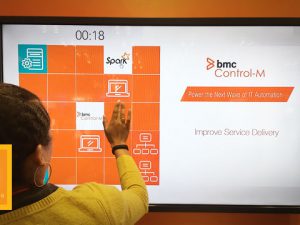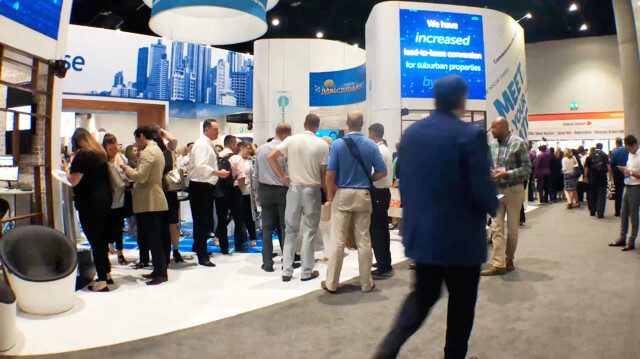
How to use digital gamification in your trade show booth
1. Pick a Game that Works with your Brand, Campaign or Booth Theme
Here are a few examples…
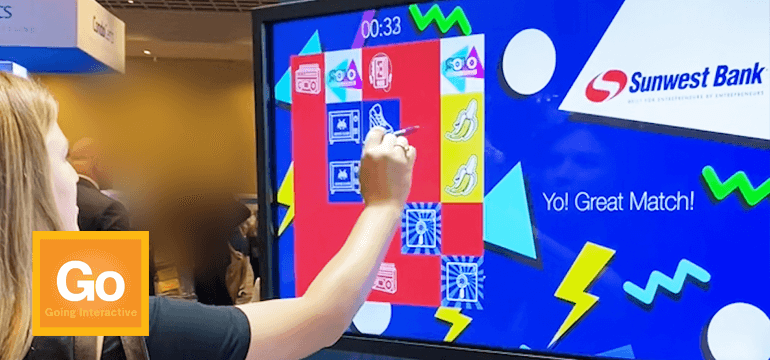 A Memory Match game will allow you to promote a new campaign’s visuals and messaging. In this game the player turns over game cards (images from your campaign, products or industry) and attempts to remember the location of the matching cards. When they make a correct “match” an accompanying phrase is displayed.
A Memory Match game will allow you to promote a new campaign’s visuals and messaging. In this game the player turns over game cards (images from your campaign, products or industry) and attempts to remember the location of the matching cards. When they make a correct “match” an accompanying phrase is displayed.
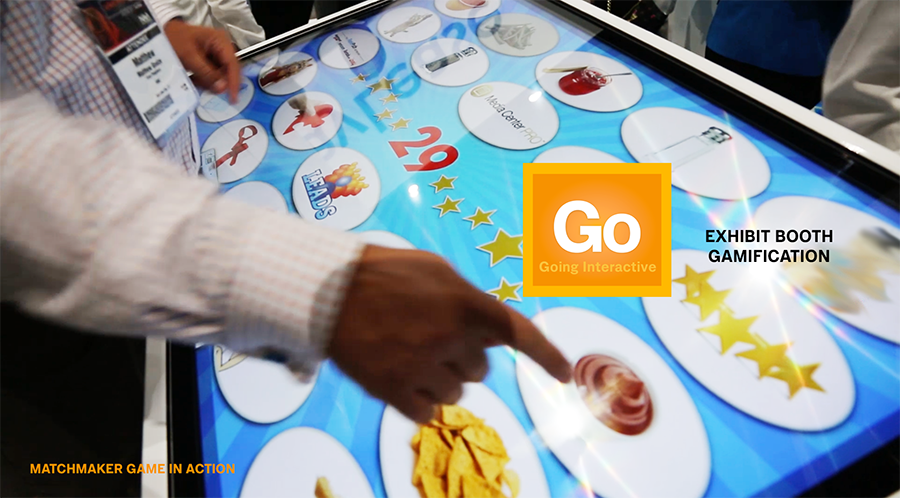 A Match-the-Pairs game would allow you to communicate how well your brand and products goes with your clients or customers. This game displays matching “pair” type images – like peanut butter and jelly – or your product and its benefit.
A Match-the-Pairs game would allow you to communicate how well your brand and products goes with your clients or customers. This game displays matching “pair” type images – like peanut butter and jelly – or your product and its benefit.
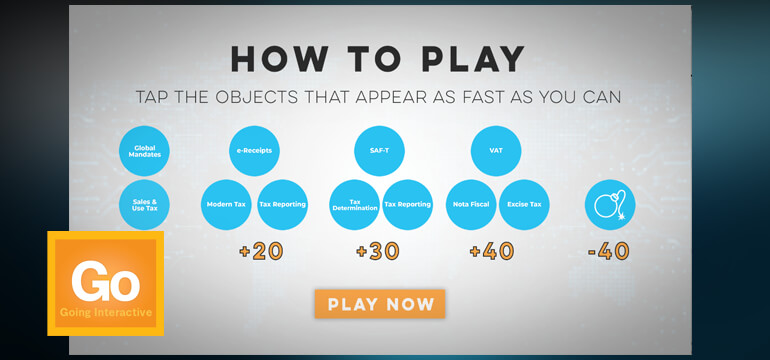 A Whack-A-Mole style game would allow you to promote the way your features and benefits of your product solve your customer’s problems – while having them “avoid” the problems they may encounter in the market.
A Whack-A-Mole style game would allow you to promote the way your features and benefits of your product solve your customer’s problems – while having them “avoid” the problems they may encounter in the market.
 A Pac Man style game would allow you to show how your products can help in an overall scenario or situation. The custom Pac Man character could be your brand mascot who goes around the board “chomping” the challenges your product or service fixes.
A Pac Man style game would allow you to show how your products can help in an overall scenario or situation. The custom Pac Man character could be your brand mascot who goes around the board “chomping” the challenges your product or service fixes.
Want to see more examples? Check this page out.
2. Leader Board or Everyone Wins?
 Some companies like to encourage a sense of competition among their players. A game with a Digital Leader Board works great for that.
Some companies like to encourage a sense of competition among their players. A game with a Digital Leader Board works great for that.
On the other hand, some prefer to just let their visitors have fun and give away prizes / swag to everyone. In this case, a game of chance, like a digital Spin Wheel or Slot Machine are great fits.
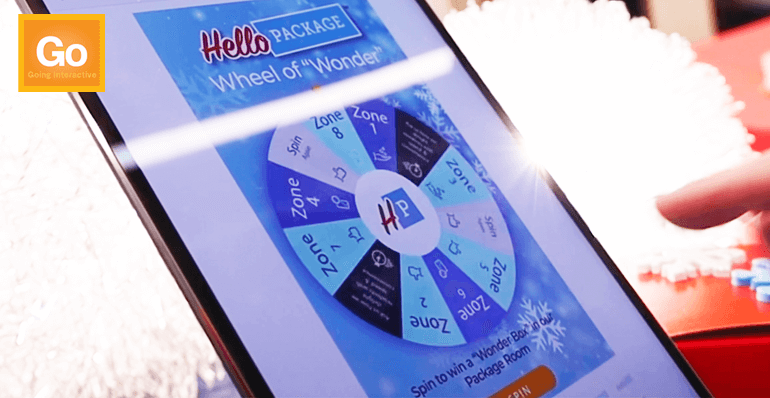
The Digital Spin Wheel can let you distribute a variety of prizes based on the pie slices. There a number of ways to control the winnings as well.
 A Digital Slot Machine can allow you to give away smaller prizes, as well as have an overall JACKPOT larger prize.
A Digital Slot Machine can allow you to give away smaller prizes, as well as have an overall JACKPOT larger prize.
3. Rent or Buy a Touchscreen – or use an iPad
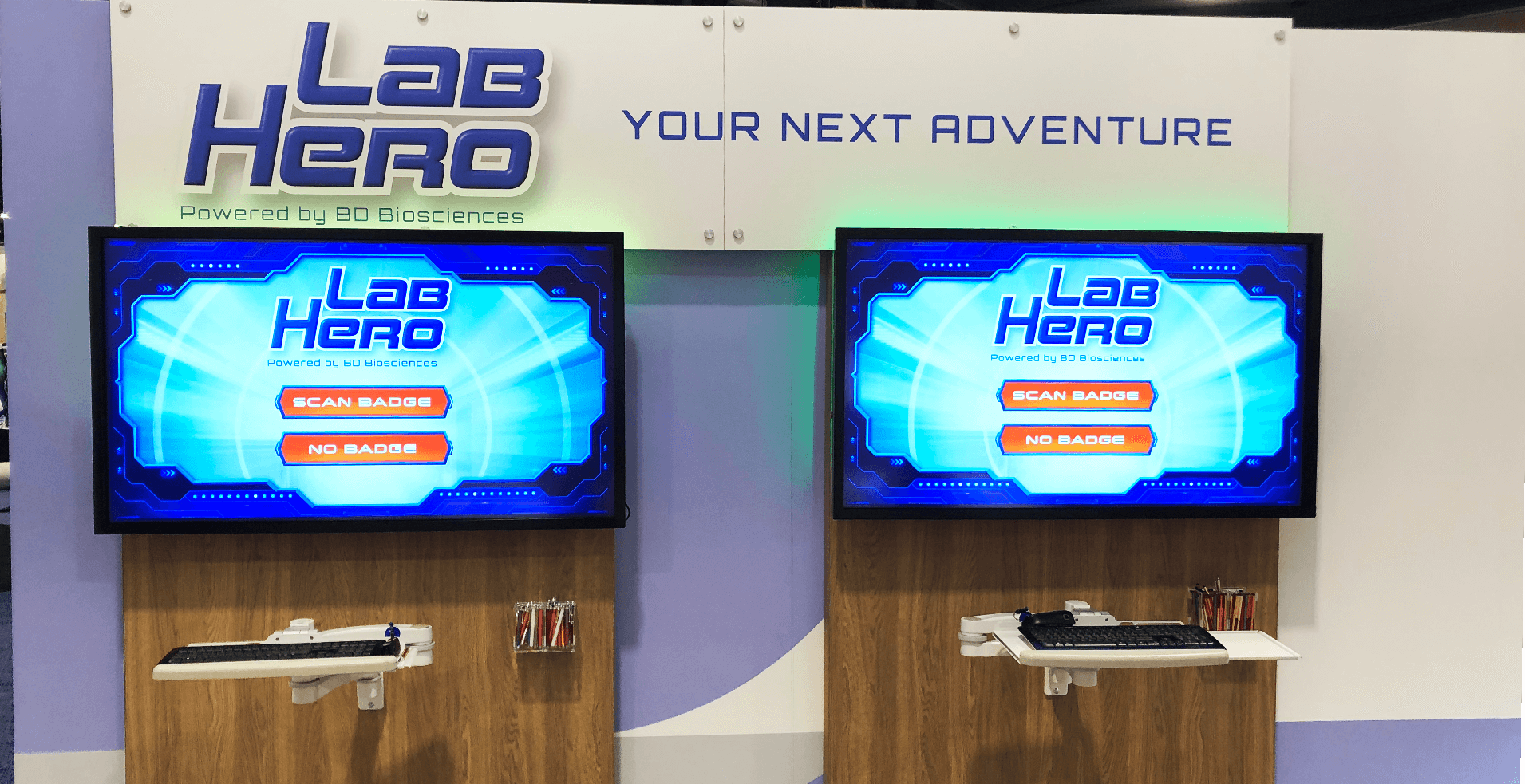 Large touchscreens work great and allow people to easily gather around and watch the action. However, if space is limited, you could use an iPad or MS Surface on a small stand, or a stand-alone stand.
Large touchscreens work great and allow people to easily gather around and watch the action. However, if space is limited, you could use an iPad or MS Surface on a small stand, or a stand-alone stand.
Vertical or Horizontal? It will depend on what works best in your booth.
 You’ll also need an input device for the screen. You can use the software keyboard, or use an external Bluetooth keyboard. Both have they advantages.
You’ll also need an input device for the screen. You can use the software keyboard, or use an external Bluetooth keyboard. Both have they advantages.
Of course, an iPad has its built-in software keyboard.
3. Promote the Game – Pre-Show
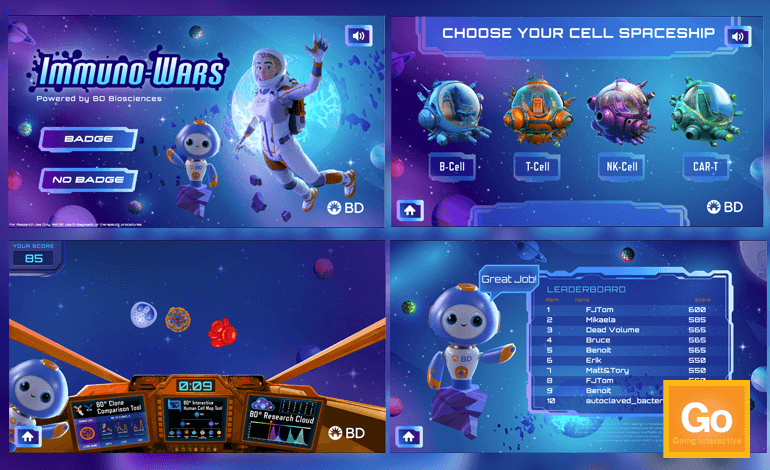 Promote your game in advance email blasts, social media and blog posts. Take the game name and use it well. Tell people to stop by and play a game and win a prize.
Promote your game in advance email blasts, social media and blog posts. Take the game name and use it well. Tell people to stop by and play a game and win a prize.
Promote your game in advance email blasts, social media and blog posts. Take the game name and use it well. Tell people to stop by and play a game and win a prize.
4. It’s Game Day! Encourage the Fun!
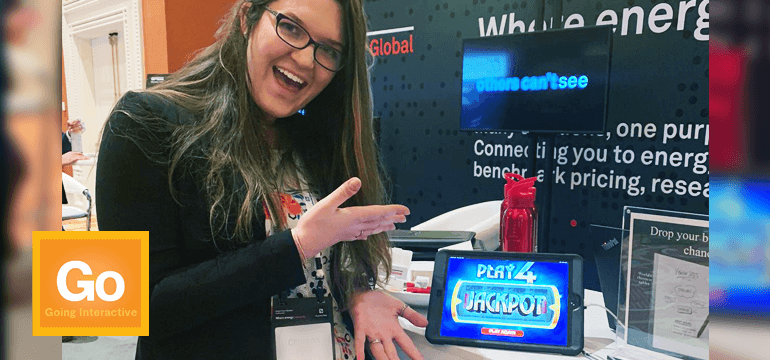 Once the show begins it’s go time!
Once the show begins it’s go time!
Have your booth attendants encourage and help people to sign-up and play. Offer to take photos and video of players.
Post content on your social media channels.
Turn on some music!
5. Follow Up on Player’s Leads
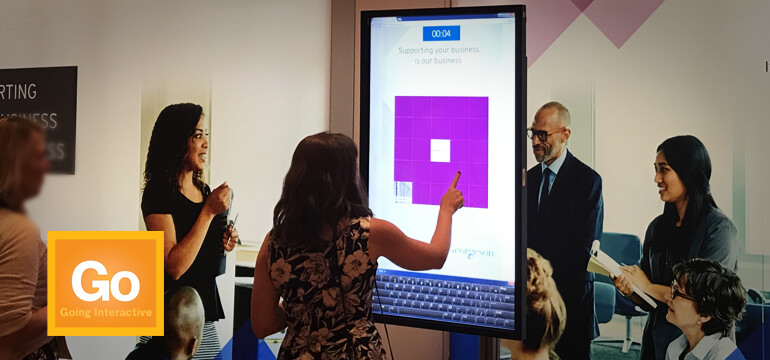 After all the hard work it’s time to reap the benefits. You’ve got your spread sheet of everyone played. And their scores, depending on the type of game you used. So, craft that follow-up email to encourage follow up on your product or service.
After all the hard work it’s time to reap the benefits. You’ve got your spread sheet of everyone played. And their scores, depending on the type of game you used. So, craft that follow-up email to encourage follow up on your product or service.
Learn More…
Contact us today to schedule a live demo and learn about all our digital games for trade show and exhibit booths.


